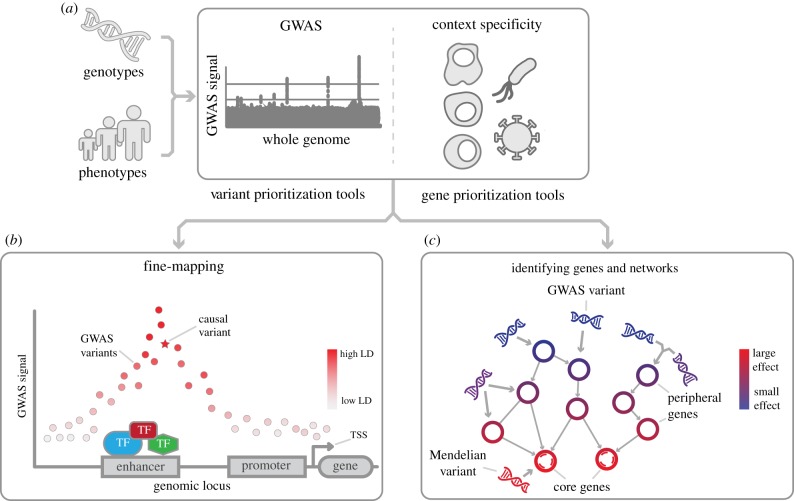Figure 1.
Outline of the current post-GWAS workflow. (a) First, the correct context needs to be identified for the trait under study. (b) Subsequently, causal variants can be fine-mapped to better understand the fundamental mechanisms of transcription. Here, the causal variant (star) is not the strongest GWAS signal, but rather a variant in strong LD with the top effect located in an active enhancer region. (c) To gain insights into the biological processes leading to the phenotype, genes can be prioritized and causal networks constructed. GWAS variants are generally common in the population and have smaller effect sizes (blue). Thus, the genes that they impact are more likely to have a small effect on the phenotype as well (peripheral genes). The genes on which many peripheral genes converge (core genes) generally have stronger effects (red) on the phenotype. As such, the variants that affect core genes are more likely to be Mendelian disease variants.

